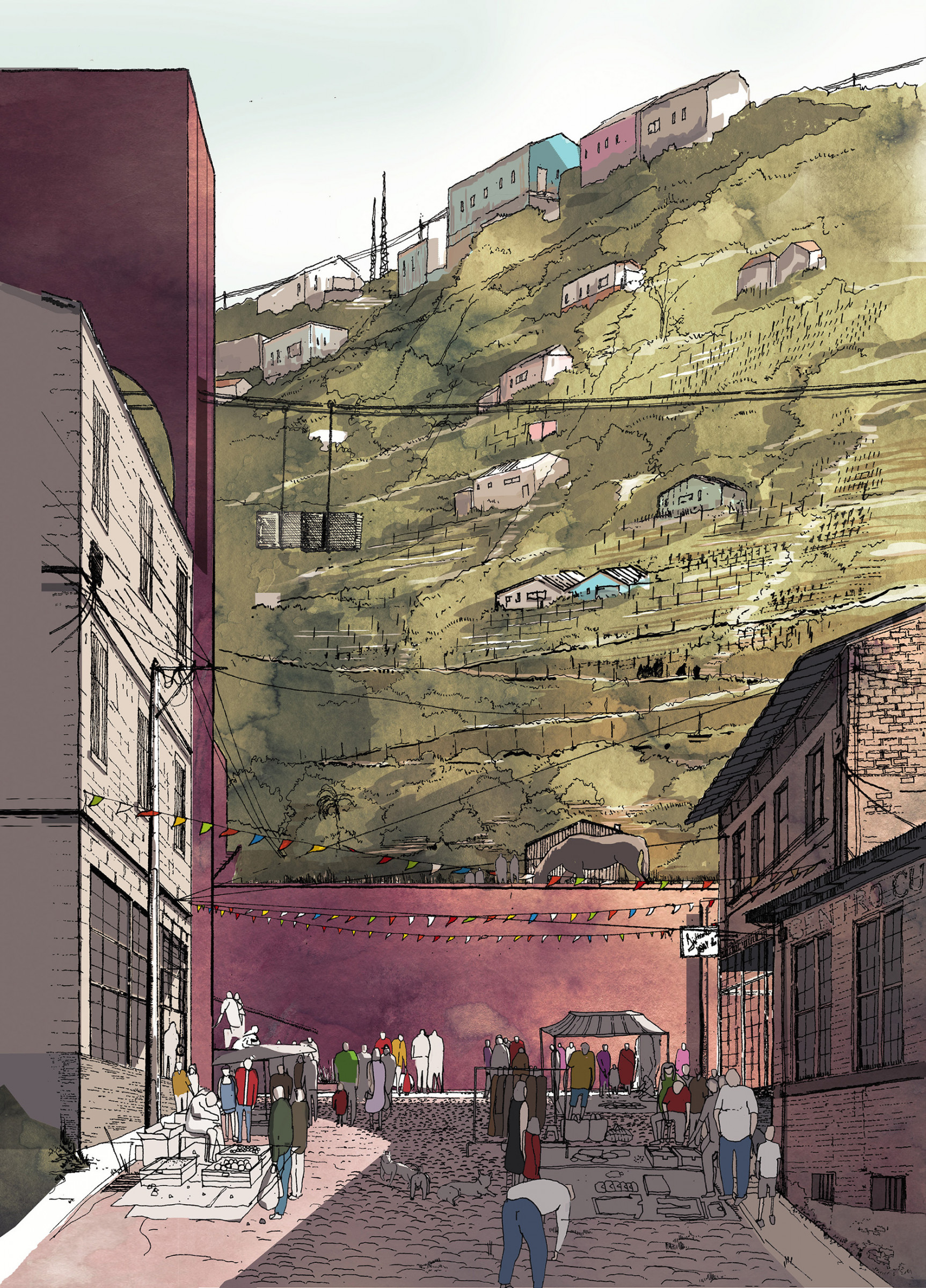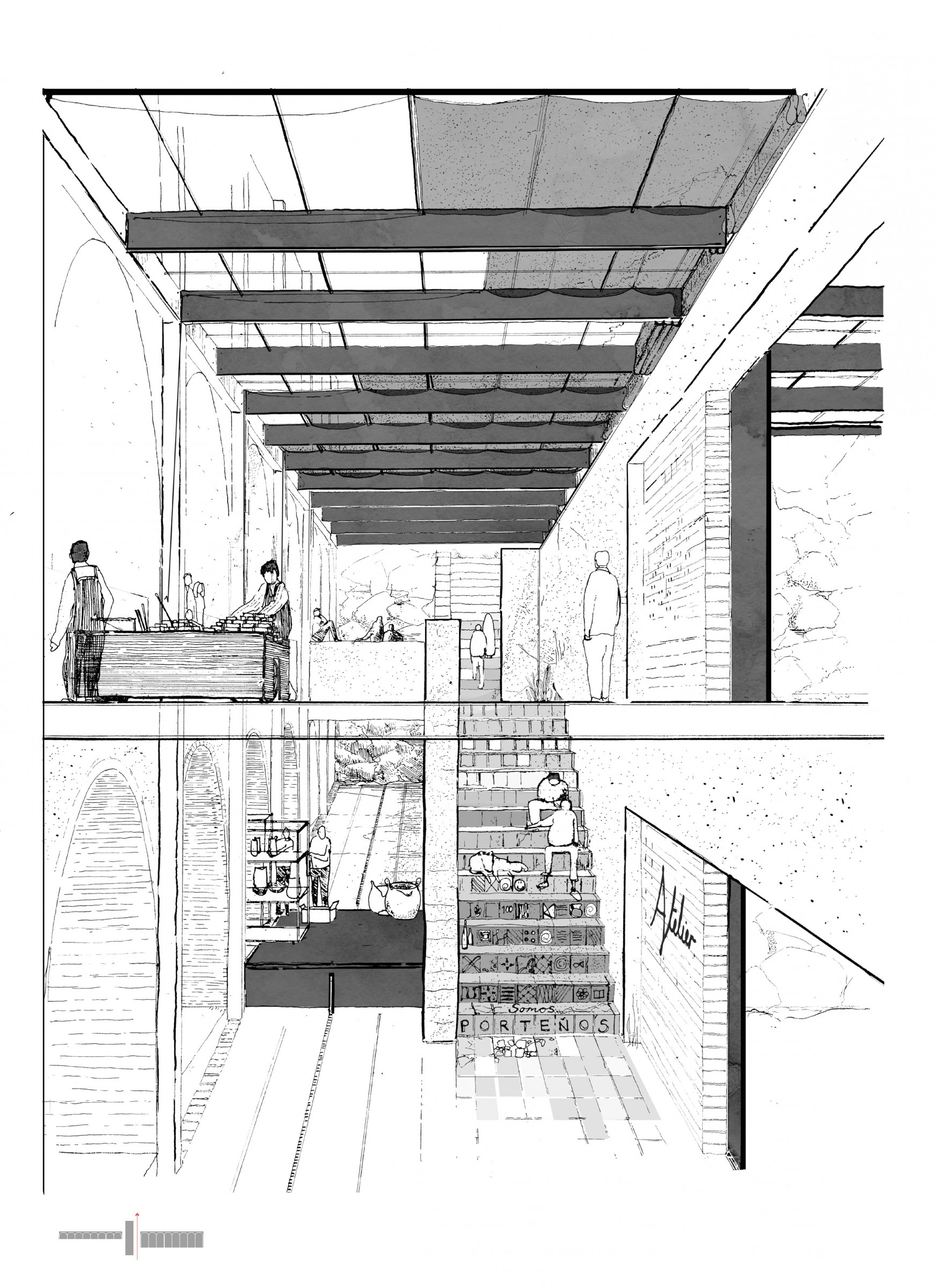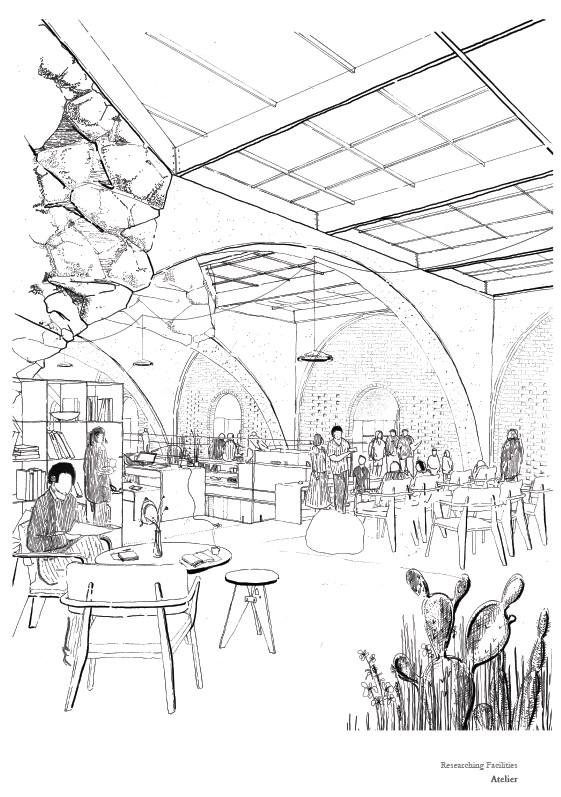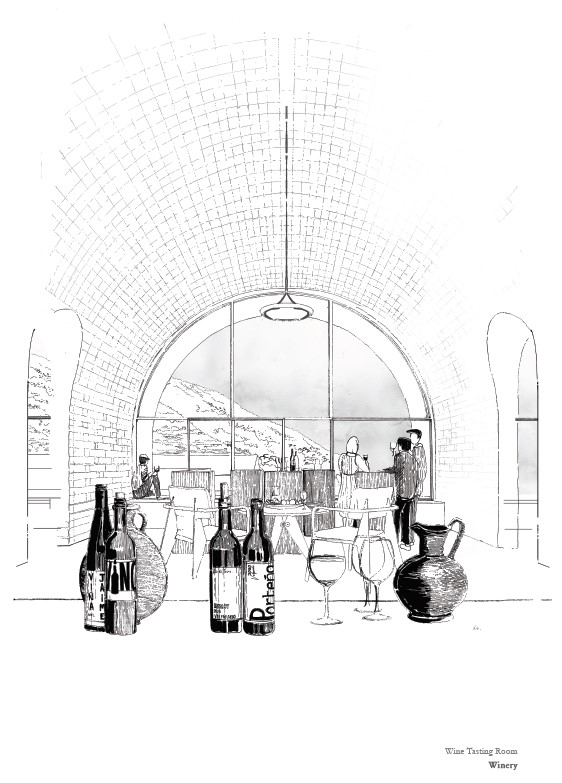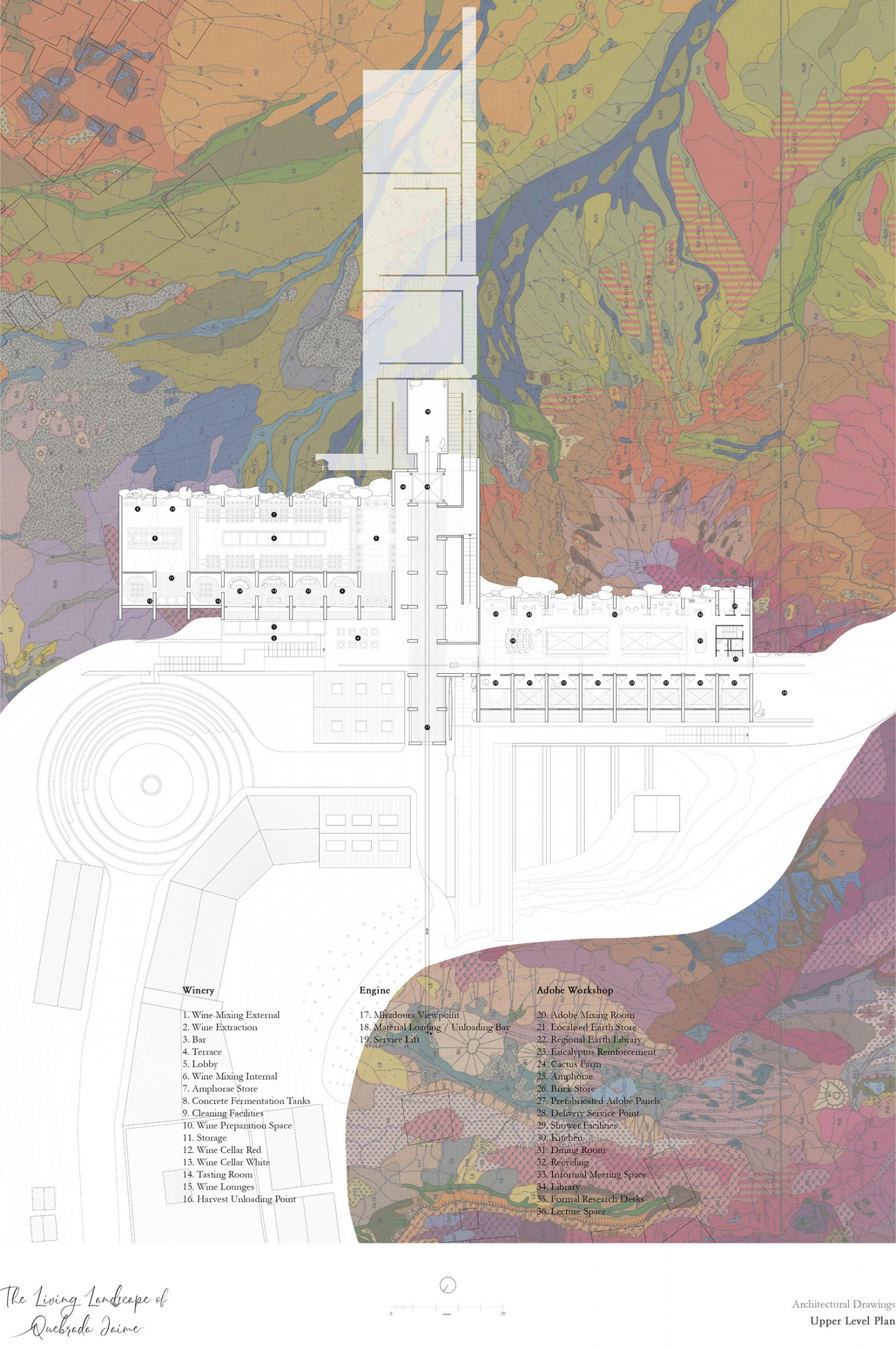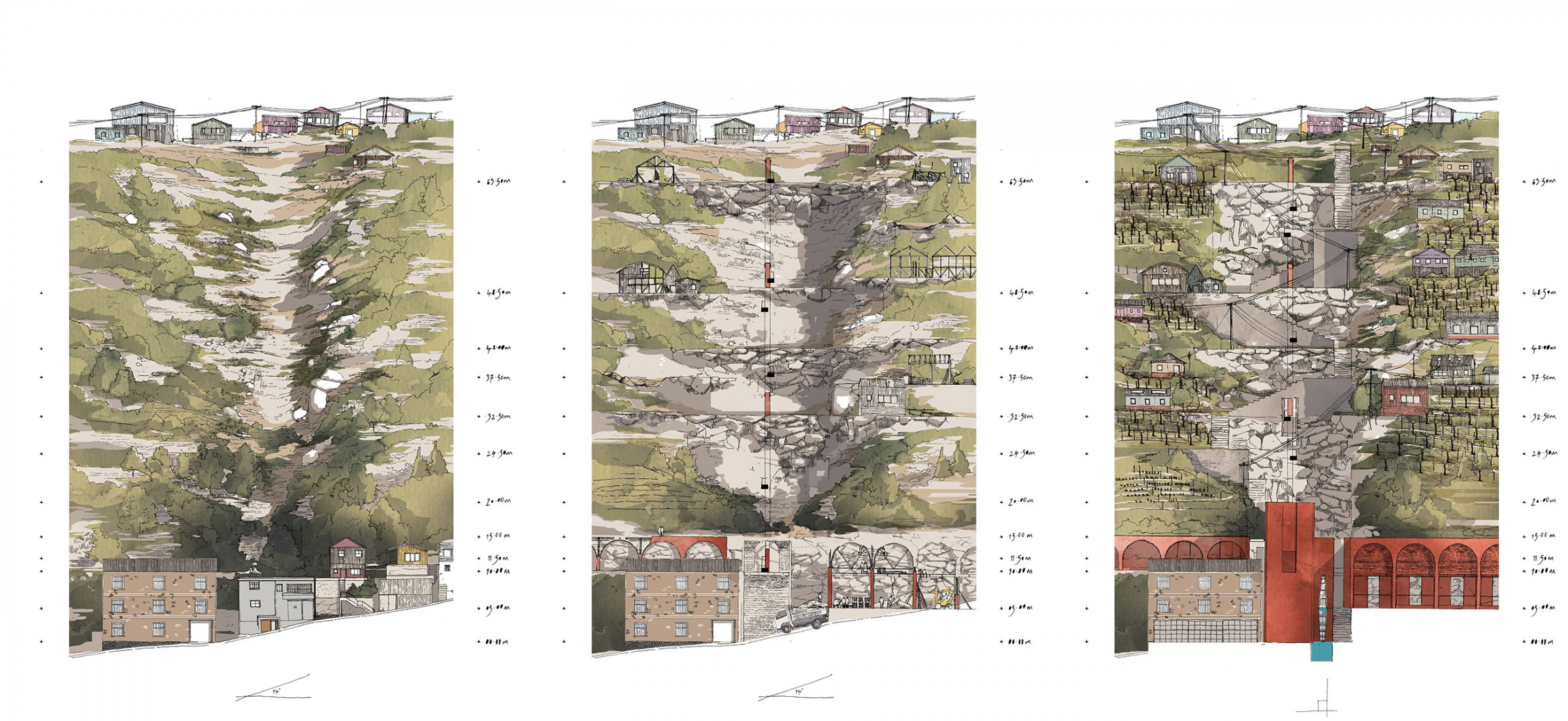The Living Landscape of Quebrada Jaime
Student: Devant Asawla
Title: The Living Landscape of Quebrada Jaime
Semester: 2018 Autumn
Teachers: dr. ir. Klaske Havik, ir. Pierre Jennen, Oscar Andrade Castro, prof. dr. ir. Tom Avermaete
This project was the winner of the national Archiprix 2019: The Living Landscape of Quebrada Jaime.
Valparaiso is a fragmented city; Its landscape defines its thresholds. The city’s amphitheatre setting has seen the maritime settlement become trapped in time, with its future outlook circumspect given its somewhat superficial tourism industry and the uncertainty surrounding its Port’s relevance on a global scale. The city is in desperate need of regeneration.
The day to day ritual of living perched high up in the hillside, commuting down to the urban plan for work and returning home in the evening is a common figure of life in Valparaiso. This threshold is encountered vertically as well as horizontally through its unique landscape. The project seeks to celebrate the traditional crafts synonymous to Valparaiso and Chile, and use industry as a catalyst for future urban upheaval in a neglected valley of the city, Quebrada Jaime. The built intervention focuses on the production of Adobe Construction Materials and Region Specific Wine.
More information about the project can be found here.
Valparaiso’s amphitheatre setting has seen the city gradually become trapped in time. Its future is unclear because of its somewhat marginal tourist industry and the uncertainty surrounding its port’s global relevance. Colourful houses and art mask a city in desperate need of regeneration.
The day-to-day ritual of living high up on the hillsides, commuting to one’s work below and ascending again in the evening is typical of life in Valparaiso. The boundary between the orthogonal grid of the urban fabric below and the informal rurality of the hills is continually being crossed. This threshold is encountered vertically as well as horizontally. It is the landscape of Valparaiso that dictates the daily lives of its residents to a great degree. This project investigates the relationship between urban and rural Valparaiso, and at a metaphorical level, humankind’s affinity with nature. The project seeks to reinstate the traditions and crafts of Valparaiso and Chile as a catalyst for future revolutionary development. The design constructs a self-sufficient industrial building that focuses on the production of: 1. Adobe construction materials (mudbricks, rammed earth, la quincha panels, earth-bag technology) 2. Region-specific wine (amphora fermented wine, specialized fruit wines, grappa etc.) Both crafts are synonymous with Chilean culture. The designed intervention initially looks at the conservation of these gradually vanishing techniques. Not that the building’s design focuses on the production of building materials and wine alone. It is also an institution that researches the possibility of a future for these traditional crafts, with facilities for education and exhibitions. From an urban standpoint, the intervention acts as a catalyst in reviving the surroundings and promoting urban green space with a recreational, social and agricultural value. Reconnecting the urban fabric of the city with the rural fringes, it serves as a gateway building between the urban fabric and the higher-lying rural part of the city, and vice versa.
More information about this project can be found here.


